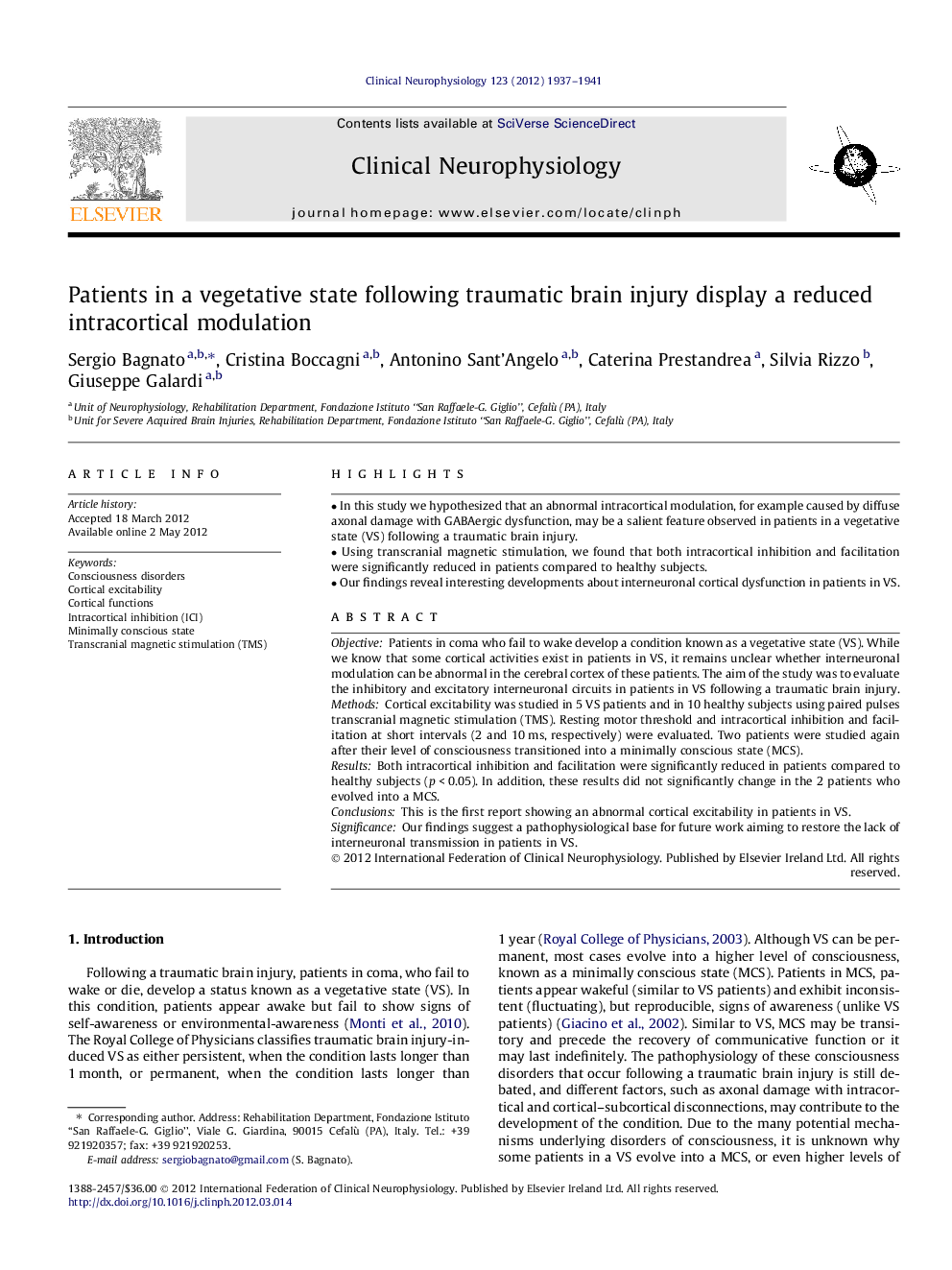| Article ID | Journal | Published Year | Pages | File Type |
|---|---|---|---|---|
| 3045375 | Clinical Neurophysiology | 2012 | 5 Pages |
ObjectivePatients in coma who fail to wake develop a condition known as a vegetative state (VS). While we know that some cortical activities exist in patients in VS, it remains unclear whether interneuronal modulation can be abnormal in the cerebral cortex of these patients. The aim of the study was to evaluate the inhibitory and excitatory interneuronal circuits in patients in VS following a traumatic brain injury.MethodsCortical excitability was studied in 5 VS patients and in 10 healthy subjects using paired pulses transcranial magnetic stimulation (TMS). Resting motor threshold and intracortical inhibition and facilitation at short intervals (2 and 10 ms, respectively) were evaluated. Two patients were studied again after their level of consciousness transitioned into a minimally conscious state (MCS).ResultsBoth intracortical inhibition and facilitation were significantly reduced in patients compared to healthy subjects (p < 0.05). In addition, these results did not significantly change in the 2 patients who evolved into a MCS.ConclusionsThis is the first report showing an abnormal cortical excitability in patients in VS.SignificanceOur findings suggest a pathophysiological base for future work aiming to restore the lack of interneuronal transmission in patients in VS.
► In this study we hypothesized that an abnormal intracortical modulation, for example caused by diffuse axonal damage with GABAergic dysfunction, may be a salient feature observed in patients in a vegetative state (VS) following a traumatic brain injury. ► Using transcranial magnetic stimulation, we found that both intracortical inhibition and facilitation were significantly reduced in patients compared to healthy subjects. ► Our findings reveal interesting developments about interneuronal cortical dysfunction in patients in VS.
